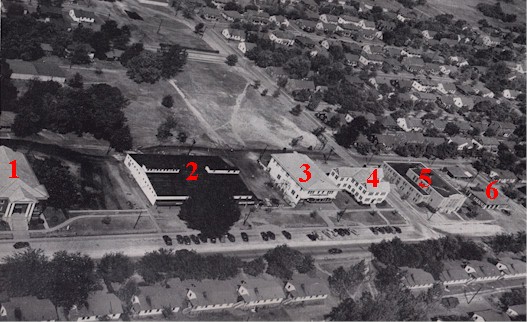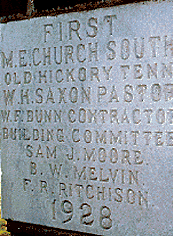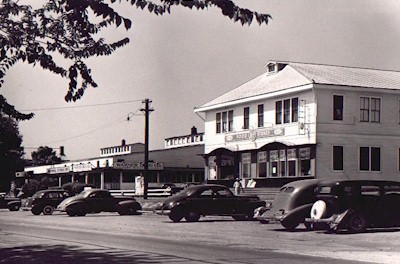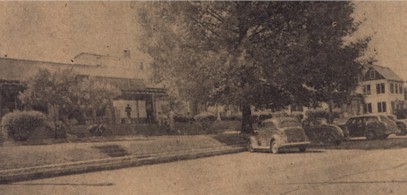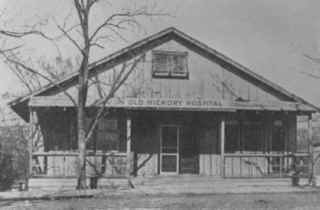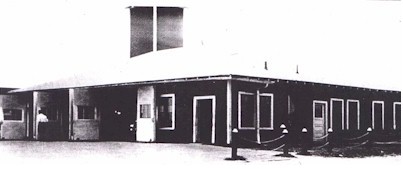|
|||||
| In
1929, DuPont sent employees from the Technical Department of the
Engineering Division to perform an in depth study of the condition of
the village to determine what improvements could be made.
Note: the engineering study was performed before DuPont employees had benefits as we know them today. To give you an idea of when most programs were put into place: Hospital Surgical Coverage - effective March 1, 1952; Life Insurance Plan - effective May 1, 1952; Vacation Plan - effective January 1, 1934; Disability Wage Plan - effective June 15, 1937; Group Accident and Health Insurance Plan - effective January 1, 1930; Pension and Retirement Plan - effective September 1, 1904. |
|||||
| (click on number to
go to description)
1929 Engineer Study Hadley Business District The other business district, on Hadley Avenue at Twelfth Street, consists of the following: A large building housing two grocery stores (one having a meat market), a men's furnishing store and a dry goods store. A two-story building having bakery, confectionery and a millinery store on the first floor and a lodge room on the second. A two-story building called "The Clinic". This houses the various village and visiting doctors and dentists; also the community nurse. No changes to or replacements of these buildings are recommended but it is recommended that further grading and landscaping of the area around these buildings be done. It is also suggested that some pressure be exerted to have the old temporary church building which is in this area dismantled or replaced by a permanent building (by the time the picture was taken above, this had been done).
Church services were often held in "tar baby" structures such as the one pictured above in the earlier years of Old Hickory. Welfare (Churches) It is a recognized principle of management that in operating a unit such as Old Hickory a Company, to obtain the best results over a long period of time, must maintain for its employees not only adequate housing and business facilities but must provide means whereby the physical, mental and spiritual activities of the employees may be developed and cared for. Only thus can lasting morale be built up so as to be a permanent asset without which no successful organization can be maintained. It is considered the spiritual side of the employees is being amply cared for by the Company's policy of providing building sites for those having sufficient strength to erect church buildings and permitting others to hold religious services in the Company buildings adapted for such purposes. |
|||||
| Return to Photo | |||||
| 1.
Old Hickory Untied Methodist Church
Old Hickory United Methodist Church was first organized in 1925 and met in the "little gym," currently the site of the Old Hickory Community Center, The construction of the current sanctuary was begun with services held in the basement. The sanctuary was completed in 1929 at a cost of $30,000. The first service was held on the first Sunday in 1929. Pews replaced folding chairs in 1936. Source: OHME website The church is on the National Historical Register and is still has an active congregation in 2002.
|
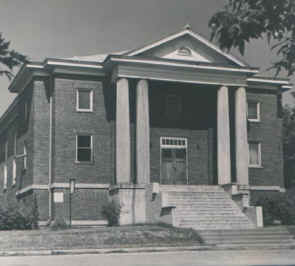 |
||||
| Return to Photo | |||||
| 2.
& 3. Warner's Drug Store and A&P Store as it appeared in
1946.
|
|||||
| Return to Photo | |||||
| 4.
The Doctor's Building
1929 Engineer Study Hospital Old Hickory is really a new community, composed entirely of Rayon workers and the Company's policy of preferring young employees has resulted in the average age of the town's population being considerably lower than an older community and consequently there is a high birth rate. Although health conditions at Old Hickory are good there is of course a certain amount of sickness which must be expected in a town of 7500 inhabitants. The City of Nashville has several very good hospitals which have a certain amount of space set aside for charity and low-pay patients. In these departments, residents of the city are given preference so it is very difficult for Old Hickory people to obtain the benefit of these special hospital privileges. As the majority of the people of the village are payroll employees it is impossible for them to pay regular hospital rates; consequently many cases of sickness cannot be properly cared for. The same applies to maternity cases, of which, as noted above, the community has a great number. Confinement cases must be treated at home where conditions are often far from ideal due to crowding, poor sanitation, noise and superstitions. It is the intention of the Company that Old Hickory shall be self-perpetuating in labor supply so "the children of today are the workers of tomorrow." It is of course desirable that these workers be healthy, happy and consequently contented. One way to accomplish this is to make it possible for every employee and his family to have the best of medical attention at rates he can afford to pay. Consequently it is recommended that a hospital with a capacity of at least 40 bets be built and that a training school for practical nurses be established therewith. In this community and the surrounding territory there is a great demand for such nurses and the supply of competent ones is very limited. A prominent physician of Nashville who handles much industrial work has been consulted in reference to this proposed hospital and has advised that such an institution is entirely feasible and very desirable and further that rates could be established which would make it self-supporting while still within the range which the Company workers can afford to pay. He also stated that it was his opinion if such a hospital were built, many of the better doctors of Nashville would be willing to join the staff. One thing not mentioned previously, since this report is primarily upon village improvements, is that at present all Plant cases requiring hospitalization must be sent to Nashville. With a hospital in the Village much time would be saved with a consequent chance of saving life in critical cases. There would also be a financial advantage to the Company in having its cases cared for in its own hospital. There is an ideal site for a hospital on the point of the high land north of the present Executive Club building. This is not the property of the du Pont Rayon Company but it is possible the present owner might make a price concession in consideration of the use for which it is to be purchased. Community Nurse A visiting nurse who is on the staff of the Davidson County Health Officer, but who is largely supported by the Company is and has been for a few years assigned to the village. An assistant nurse was assigned to the village July 1, 1929. These nurses are doing very effective work and the Company must continue to support the movement. |
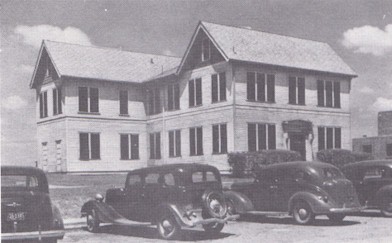
This building housed Dr. Johnson and Hawkins as well as a dentist.
This was the hospital in 1918. It actually was a part of the Triangle district. The building still stands today in a much altered state. It is the small white building on the right as you are going toward the Union Hall. |
||||
| Return to Photo | |||||
| 5.
Old Hickory Baptist Church
Old Hickory News - 15th Anniversary Old Hickory-DuPont 1939 It was fifteen years ago this September that the Baptist Church of Old Hickory was organized. On the fourteenth day of the month, the twenty charter members met at the little white farm house in the 1500 block on Hadley Avenue. Four of those persons remain active members of the present church. Today this church meets in $40,000 building at 12th and Hadley and has a membership reaching 600. It is planning to observe the fifteenth birthday next month. Dr. W.C. Golden one time Secretary of Missions for the Tennessee Baptist convention, led in forming that original organization. A.W. Duncan acted as Moderator and many of the Nashville churches were represented to assist in the initial work. The Rev. W.W. Davis of Kentucky was called as the first pastor and he served the church for two years. The little farm house was used as the house of worship for a time, and also the old N.I.C. school building then located on what is now the ball park. It was during Mr. Davis' pastorate that the lot at 12th and Hadley was chosen for the church's permanent location. After leaving the old N.I.C. school building, the congregation met in one of those powder plant structures at the present lot. It was very small and was humorously called "the tar baby." The "tar baby" was torn down in 1929 and the current church built. |
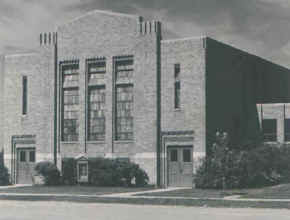 |
||||
| Return to Photo | |||||
| 6.
Fire Department
1929 Engineer Study The Fire Department building is also in this district. The present building which is of frame construction is fairly satisfactory for the housing of the fire equipment but the dormitory and office portion is too small and poorly adapted for its purpose.
Old Hickory, Tennessee A publication issued by the Nashville Industrial Corporation in the early 1920s. Efficient fire protection is furnished Old Hickory by a company of trained men, supplied with the best equipment obtainable. A centrally located fire station, with motorized apparatus, is connected to all parts of the city by a Gamewell alarm system, of the most improved type. The apparatus consists of two Brockaway hose wagons, with ladders, chemical tanks and all necessary appliances, a Ford chemical truck used by the Chief in answering all alarms, and two smaller hose trucks, built on light weight but speedy cars. The light hose trucks are held at a station inside the plant area and are available for emergency duty within a very few minutes. The efficiency of the fire department, which has been proved under actual fire fighting conditions, as well as in test runs, has resulted in low insurance rates being granted by the insurance underwriters.
|
|
||||
| Pictured below left to right: Bud Watson (Lt), William Hunt (capt.): 2nd row: Brentiss Watson, Roy Owen, Harry (Skinny) Neese, Fortson Kelly, George Keaton, Winfield (Red) Burris, Jim Overton, "To Go" Glover | |||||


